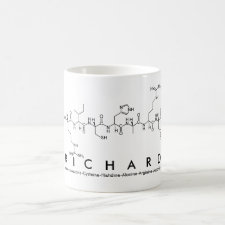
Authors: Ansell RJ, Wang DY
Article Title: Imprinted polymers for chiral resolution of (±)-ephedrine. Part 3: NMR predictions and HPLC results with alternative functional monomers.
Publication date: 2009
Journal: Analyst
Volume: 134
Issue: (3)
Page numbers: 564-576.
DOI: 10.1039/b815145h
Abstract: The monomers trifluoromethacrylic acid (TFMAA), 2-hydroxyethylmethacrylate (HEMA) and itaconic acid (IA) have been compared for the molecular imprinting of (-)-ephedrine. Data from NMR titrations were fitted using the program HypNMR to obtain association constants for monomer–template (M–T) complexes of different stoichiometries. These were used to predict the speciation in imprinting mixtures with porogen and cross-linker, and molecularly imprinted polymers (MIPs) were fabricated and their ability to bind (-)-ephedrine and its enantiomer were assessed by high performance liquid chromatography (HPLC). TFMAA and IA interact more strongly with ephedrine than does MAA, yet MIPs made with each of these monomers perform worse. With TFMAA, covalent monomer–template adducts and TFMAA oligomers, present in the polymerisation mixture, may detract from the MIP recognition properties. With IA, the relative flexibility of the monomer may be an issue. HEMA interacts more weakly with ephedrine, and HEMA-based MIPs exhibit much worse retention, and poorer recognition, than those based on MAA. It may be useful to use a higher ratio of M : T in the case of HEMA because the monomer interacts with the cross-linker EDMA.
Template and target information: (-)-ephedrine



Join the Society for Molecular Imprinting

New items RSS feed
Sign-up for e-mail updates:
Choose between receiving an occasional newsletter or more frequent e-mail alerts.
Click here to go to the sign-up page.
Is your name elemental or peptidic? Enter your name and find out by clicking either of the buttons below!
Other products you may like:
 MIPdatabase
MIPdatabase









